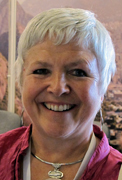Policy Bite: Early years – the importance of family doctors in intervention and advocacy.
 With Amanda Howe
español
With Amanda Howe
español
One of the most heart wrenching aspects of the photos of refugees is the sight of small children trailing across deserts, being dragged into boats, or through police lines. Any family can be the victim of a tragedy, but the odds are stacked against children from lower income families: in the U.K., “t
he most prevalent risk factors for psychological (and physical) ill health in children are low income (around 30% of children), linked directly to being a lone parent (24% of families), and living in social housing (27% of families). Factors relating to ethnicity (minority ethnic 7.9%), child factors (such as low birth weight 7-10%) and maternal factors (such as maternal age and smoking in pregnancy (17%) are less prevalent: and being of low income/socioeconomic status does further increase these additional risk factors.”
1
As family doctors, we know we cannot generalise – that each child and family are different, and some can be wonderfully resilient in the face of considerable adversity. Many children from lower income families will have happy and nourishing upbringings – caring and protecting adults in family networks and communities can compensate for material challenges. Some of the biggest risks are to those whose families have to migrate for economic or safety reasons, and end up in big cities without social support. But these children, if identified early and supported in their use of education and health services, can grow and thrive. And this is where the role of strong primary health care teams who are local to communities and offer comprehensive services over time can play a crucial role.
One of the contributors in the rural track (
Clinical morbidity profile in Rural Chattisgarh Dr Raman Kataria) of the recent highly successful and enjoyable Family Medicine Conference in Delhi, India, gave several case studies where the location of a community team enabled significant preventive and diagnostic work to be carried out in families who would otherwise probably have missed out on relevant care. Examples included diagnosis of TB in family members of a pregnant woman; children who were malnourished noticed by a health worker when visiting a relative; and the offer of rehabilitation to a young father with a previous spinal injury, which led to him being able to greatly improve his mobility. Contrast the situation of many people in India, which, in spite of its global status as an emerging economy, has low government spend on health care - and where innovations in health care development and financing have not yet achieved equitable access to good services
2. Many have to pay out of pocket for health care, often also travelling long distances, and this means they are less likely to take up preventive care or present early to doctors.
Other barriers are that some health systems send child patients direct to paediatricians, which both undermines the status of family doctors and can decrease access to relevant knowledge of other family members. If the team caring for the child is outside the community, then local intelligence about emerging problems in households (such as job losses, alcohol abuse, or domestic violence) is lost to the clinicians, and the kinds of ‘incidental’ finding of problems illustrated above is also lost.
The new W.H.O. Sustainable Development Goals show that much of what is needed for excellent outcomes in child health goes beyond health care.
The U.K. has laid great emphasis on early years engagement with families who are ‘socially’ at risk
3, and much of this is about education and economic facilitation. Nevertheless, the role of a local doctor and primary care team can do crucial work with individual families, to encourage engagement with services and manage risk
4; collect data on health needs and ensure uptake by marginalised groups; and also to speak as advocates when services are inadequate or failing to meet the needs of their populations.
The subject for this policy bite appealed to me because I have a new grandchild – so the health of young children and the needs of their parents is vivid for me at present. It is also approaching Christmas in the U.K. – a public holiday which is linked with the story of the birth of Jesus when he was far from home and his parents had to rely for shelter on an innkeeper who allowed them to sleep in the stable. I know many of you will be doing your hard work for families and children’s wellbeing every day; some of you are working with those taking temporary shelter in a foreign land; and all of you want your own families to thrive and flourish. Time spent on good care for children is a particular part of our mission as family doctors; they are our future. I know your patients will benefit, and hopefully be grateful, for all the help you can give.
References
1. http://www.nice.org.uk/guidance/ph40/documents/social-and-emotional-wellbeing-early-years-review-32
2. UNICO Studies Series 13 . Expanding Health Coverage for Vulnerable Groups in India1 Somil Nagpal2 The World Bank, Washington DC,January 2013
3. https://www.gov.uk/government/publications/2010-to-2015-government-policy-childcare-and-early-education/2010-to-2015-government-policy-childcare-and-early-education
4. http://www.rcgp.org.uk/~/media/Files/CIRC/Child-and-Adolescent-Health/NSPCC-child-maltreatment-report-July-2014.ashx